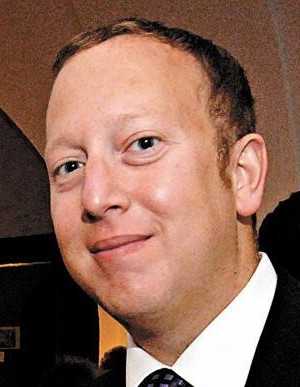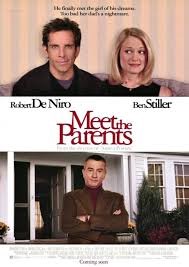Jewish scandals are like earthquakes: sooner or later, another is bound to strike. Sometimes they shake giant companies and reputations to the ground. Think of Robert Maxwell in the United Kingdom and Bernie Madoff in the United States. But there’s also a very big difference between Jewish scandals and earthquakes. Respectable academics are allowed to analyse and describe earthquakes in as much detail as they like. Everyone agrees that we need to understand earthquakes better and reduce the harm they do. Ideally, we’d like to prevent them altogether.
Pattern recognition is forbidden
But respectable academics are not allowed to analyse and describe Jewish scandals in any serious detail. The scandals can’t even be given their correct racial label. To respectable opinion, Maxwell and Madoff were mega-fraudsters who just happened to be Jewish. Nothing more can be said. No racial, cultural and psychological patterns can be recognized, no preventative measures proposed. And so Jewish scandals will continue to strike. The latest in the United Kingdom centres on a Jewish activist called Jeremy Newmark, who has resigned as chair of the Jewish Labour Movement (JLM) after being accused of “theft and embezzlement” during his earlier time at the Jewish Leadership Council (JLC):

Jeremy Newmark, ex-JLC, ex-JLM
An internal audit into the conduct of Jeremy Newmark while he was chief executive of the Jewish Leadership Council reported that he deceived the organisation out of tens of thousands of pounds and misled charities about the cost of projects he worked on. The [Jewish Chronicle] has obtained a devastating report into the alleged actions of Mr Newmark — who is currently chair [now resigned] of the Jewish Labour Movement and narrowly failed to win the Finchley and Golders Green seat for Labour at last year’s general election — between 2006 and 2013.
In order to avoid a scandal, the JLC’s trustees decided to keep Mr Newmark’s alleged behaviour secret and not inform the police. The trustees — including former chairman Sir Mick Davis, who is now chief executive of the Conservative Party, and property tycoon Leo Noé — accepted Mr Newmark’s resignation on the grounds of ill health after his seven-year long stint at the helm of the charity.
When presented at the time with the evidence of the internal investigation, Mr Newmark is understood to have acknowledged that the picture it painted “did not look good”. But the JLM chair, who was elected as a local councillor in Hertsmere last year, has consistently denied any wrongdoing and insisted he left the JLC because he was suffering from diabetes. He had been diagnosed with the condition six months before his departure.
… Defending the actions the JLC took at the time, Sir Mick this week said the organisation’s trustees had acted immediately after they became aware of the issues. He added that in the wake of Mr Newmark’s resignation, no further action was taken out of regard for his health and family. Details of the 2013 investigation have remained undisclosed for the past five years.
… The trustees involved in making the decision included Stephen Pack, then president of the United Synagogue; Vivian Wineman, then president of the Board of [Jewish] Deputies; Mr Noé; Gerald Ronson, chair of the Community Security Trust; and Sir Trevor Chinn, also a JLC vice-president. …
Mr Pack defended the actions of the JLC trustees, saying: “The judgment that was taken at the time, particularly by the president [Sir Mick], was that any monies that were alleged to have gone were put back, so a charity wasn’t disadvantaged. And that it was in the best interests of the community that Mr Newmark should step down and go. It was not necessary to publicly humiliate him.”
He said the concept of lashon hara meant it would be wrong to sully Mr Newmark’s reputation. “I don’t think it’s the position of somebody who purports to be an Orthodox Jew to take that sort of action.” … (Revealed: how Jeremy Newmark deceived the Jewish Leadership Council out of thousands of pounds, The Jewish Chronicle, 8th February 2018 / 23rd Sh’vat 5778)
This Jewish scandal has been neither named as such nor given the attention it deserves by the mainstream media. And it certainly hasn’t been analysed for specifically Jewish patterns of harmful culture and behaviour. No respectable researcher would dream of conducting such an analysis and concluding that the Jewish community has a very bad influence on British politics. But this is the Occidental Observer, certified by the SPLC and ADL as extremist and unrespectable, so I will now undertake exactly that analysis and reach exactly that conclusion. Read more


 Life does not seem good for poor Harvey Weinstein, as it is now reported that his once high-flying production company will likely file for bankruptcy after his
Life does not seem good for poor Harvey Weinstein, as it is now reported that his once high-flying production company will likely file for bankruptcy after his  How to Judge People by What They Look Like
How to Judge People by What They Look Like
 Darkest Hour centers around the conflict of whether Winston Churchill, at the low point of the war from his perspective in May of 1940, should negotiate/capitulate to Hitler, or fight on against all odds. We all know the basic contours of this history. While the expected dramatic liberties are taken, the essential thrust of the debate within the Churchill cabinet presented in the film is more or less historically accurate, and thus is food for thought.
Darkest Hour centers around the conflict of whether Winston Churchill, at the low point of the war from his perspective in May of 1940, should negotiate/capitulate to Hitler, or fight on against all odds. We all know the basic contours of this history. While the expected dramatic liberties are taken, the essential thrust of the debate within the Churchill cabinet presented in the film is more or less historically accurate, and thus is food for thought.


